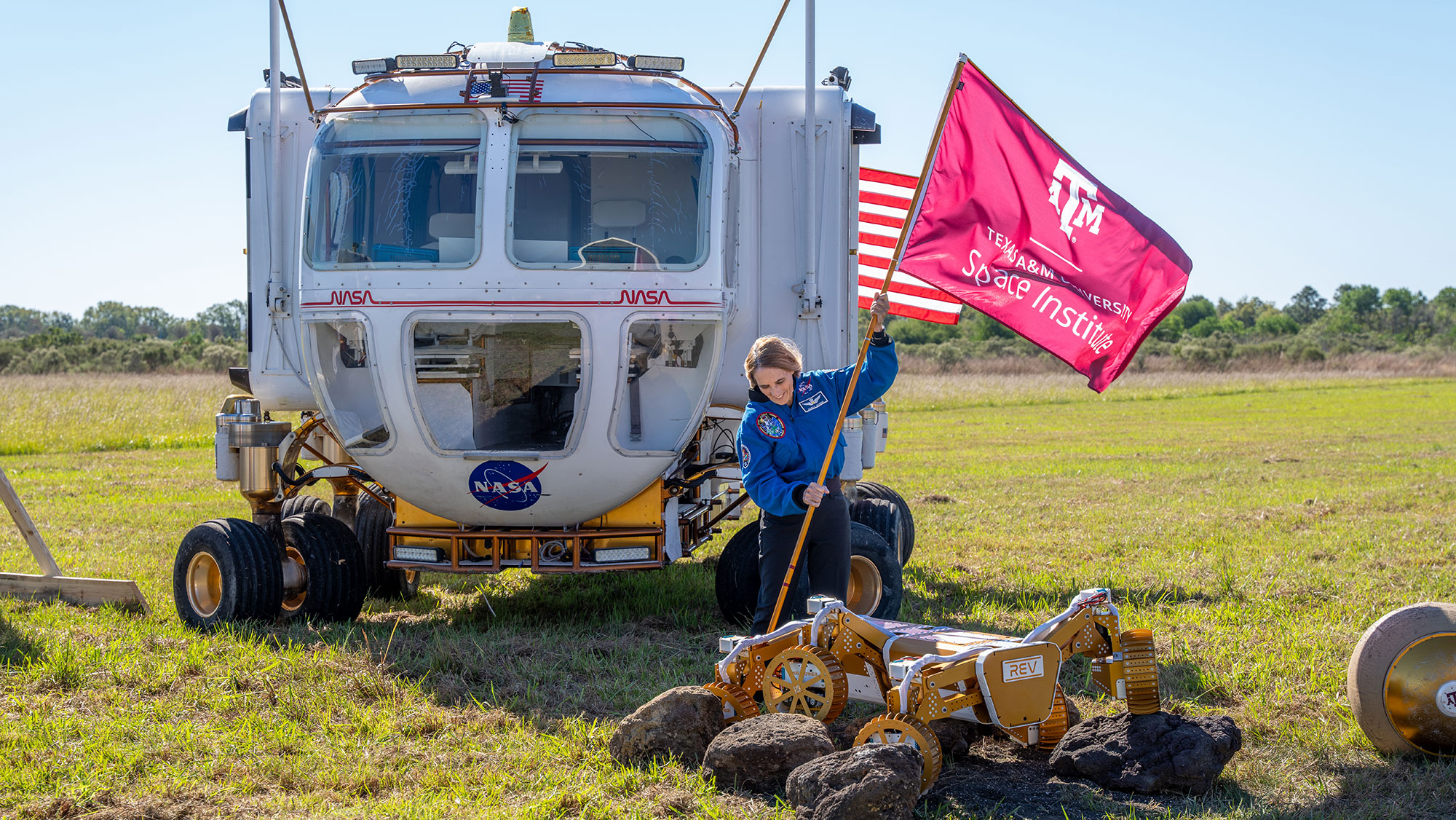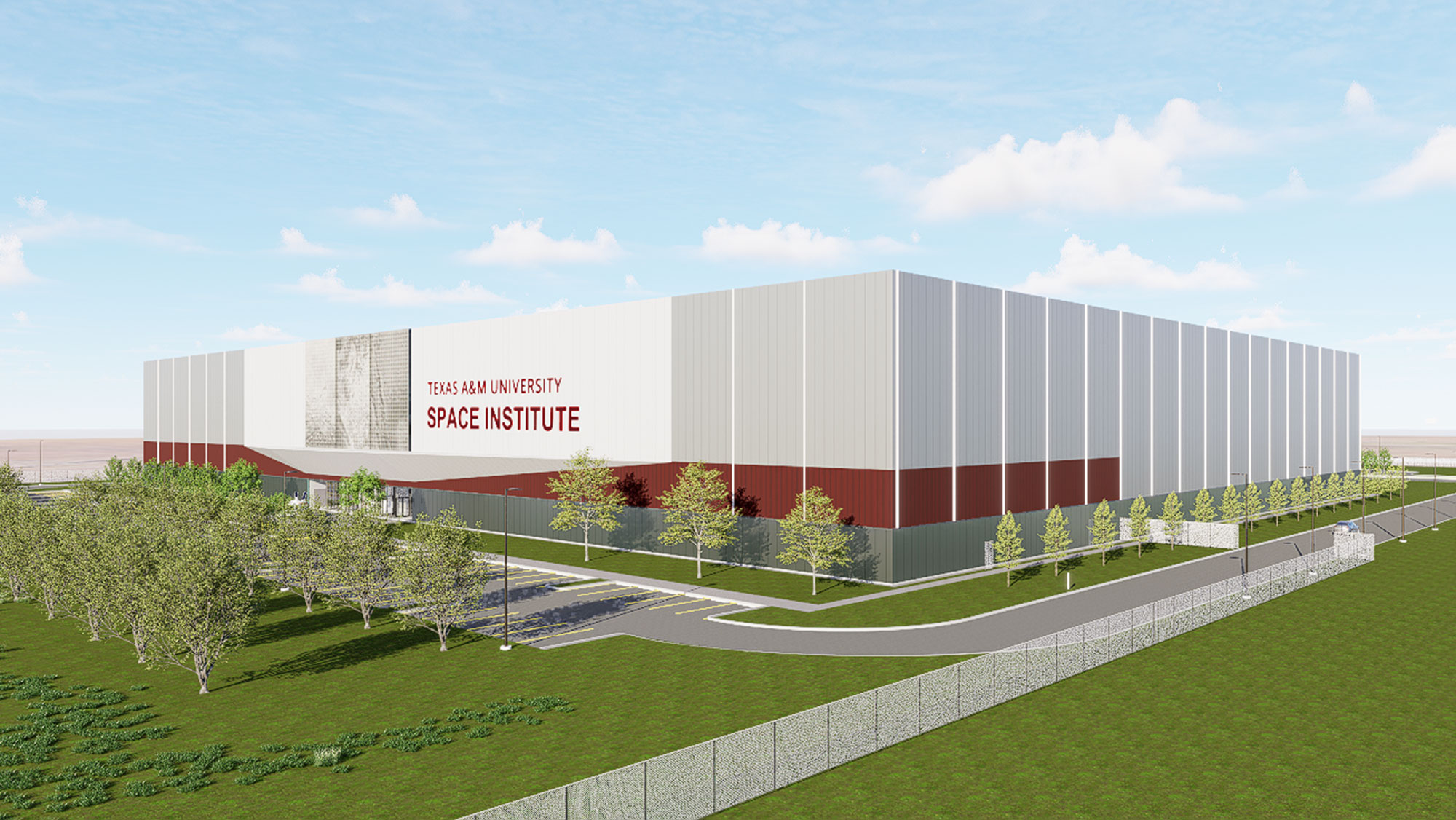
A groundbreaking ceremony for the Texas A&M University Space Institute was celebrated on Nov. 15, marked by the planting of the institute’s flag by Dr. Nancy Currie-Gregg, director of the institute, professor of engineering practice at Texas A&M and a former NASA astronaut.
“This new $200 million facility, here next to NASA’s Johnson Space Center in Houston, will support training for missions, including simulated landings on the moon and Mars, as well as advanced research and development in aeronautics, robotics, and other fields,” said Bill Mahomes ’69, chairman of The Texas A&M University System Board of Regents. “The facility will be vital for partnerships, both research and commercial, that help Texas businesses as well as NASA stay at the forefront of the final frontier.”
The Texas A&M Space Institute positions the university as a national leader in the critical and expanding field of space engineering. The institute is uniquely positioned to train the next generation of space experts by equipping students with the skills needed for a rapidly expanding space industry. With this new opportunity, Texas A&M is pioneering the future of space exploration, securing the safety of our ventures beyond Earth, and ensuring that Texas remains at the forefront of this new space age.
Together, we are setting the stage for advancements that will redefine what is possible in space exploration and technology. This institute represents our commitment to pushing the boundaries of knowledge, and I can’t wait to see the breakthroughs that lie ahead.
“As space exploration expands, there will be a growing demand for highly skilled engineers, scientists, and professionals. Texas A&M is ready,” said Texas A&M University System Chancellor John Sharp ’72. “With this new facility, A&M will create workforce development opportunities in space-related fields.”
Texas House Bill 3447, authored by Rep. Greg Bonnen, M.D. ’88 and sponsored in the Senate by Sen. Joan Huffman, received the support of Governor Greg Abbott, Lt. Gov. Dan Patrick, Speaker of the House Dade Phelan and the entire Texas Legislature. The $350 million investment, including $200 million allocated for the new facility at Johnson Space Center’s Exploration Park, will propel Texas to the forefront of the space economy. This has laid the foundation for advancements that will benefit not just Texas, but the entire nation.
“Texas A&M officially added ‘space-grant university’ to our mission 35 years ago and we’re proud of all that has been accomplished by our world-class faculty over the years since then,” said Texas A&M President General (Ret.) Mark A. Welsh III. “Thanks to generous support from the state legislature, this new institute will significantly elevate the university’s reputation as a global leader in space research, aeronautics and innovation, drawing attention from academia, government and private industry worldwide.”
Texas A&M University, a space-grant university, employs four astronauts. Scientists and engineers from Texas A&M have participated in all NASA rover missions to Mars with two scientists active on NASA’s Perseverance Rover Team. Plus, more than 280 faculty and investigators from Texas A&M, the Texas A&M Engineering Experiment Station, and Texas A&M AgriLife Research are involved in space-related research.

“With the new facility at Exploration Park, Texas A&M will play a pivotal role in lunar missions, Mars exploration, and simulations for living on the Moon and Mars,” said Dr. Robert Bishop, dean of the Texas A&M College of Engineering. “This site will foster the development of innovative technologies like landers, space suits, rovers and other essential equipment.”
Earlier this year, Abbott called on Texas universities to lead the charge in preparing the next generation of engineers for lunar and Martian missions. The space institute groundbreaking marks significant progress towards answering the call.
“I am excited to embark on this journey alongside Dr. Rob Ambrose, the associate director of the institute and a professor of mechanical engineering,” Currie-Gregg said. “Together, we are setting the stage for advancements that will redefine what is possible in space exploration and technology. This institute represents our commitment to pushing the boundaries of knowledge, and I can’t wait to see the breakthroughs that lie ahead.”